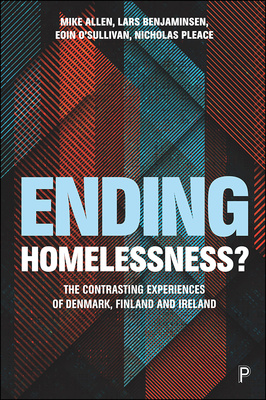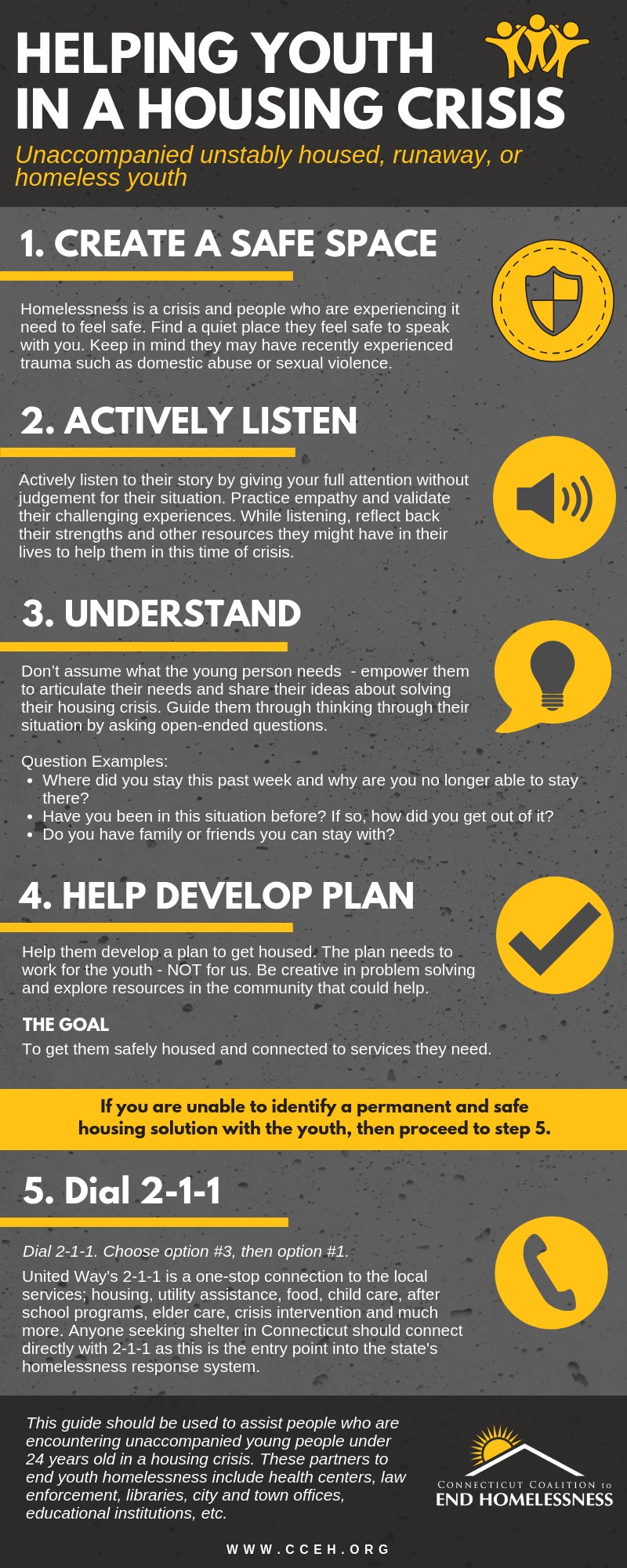research practice and policy strategies to end homelessness
Research Practice and Policy Strategies to End Homelessness. We followed 11105 families who applied for community-based services to prevent homelessness in New York City from October 1 2004 to June 30 2008 through administrative records using.
Tiny Homes is an emerging strategy to combat homelessness and Jackson et al.
. Milbank Q 931139-178 01 Mar 2015. Authors Christine M Rine 1 Charles LaBarre 2 Affiliations 1 MSW program. Creating a science of homelessness during the Reagan era.
Our specific goals were to gain an understanding of the different populations for whom interventions have been tested and the type of interventions evaluated as well as to create an inventory of the indicators used to assess the effectiveness of interventions. This policy-focused article describes several tools that can be used to help achieve this goal including. Youth homelessness has profound consequences reaching well beyond individual youth and their immediate families.
Ending homelessness strategies Ending homelessness strategy Number of papers N66 Percentage of papers1 Permanent independent housing 20 30 Transitional shelters and housing 13 20 Policy initiatives 9 14 Institutional discharge planning 6 9 Monetary assistance 5 8 Housing mediation 5 8 Modified therapeutic communities 4 6 Supportive housing 4 6. Defining homelessness Measuring the number of people who are experiencing homelessness requires a definition of. Although policies and strategies to.
Homelessness prevention works to address the causes of homelessness before it occurs. Growing evidence indicates that prevention strategies help communities reduce the number of people entering the homeless system. Promising Strategies to End Youth Homelessness.
However ending chronic homelessness takes political will leadership. To close the front door of entry into. Historical Context Beginning in the 1980s a large body of research on homelessness began to emerge spearheaded by researchers.
CHAPTER FIVE POLICY PRACTICE AND RESEARCH. As detailed above the introduction of the entitlements for re-housing has successfully helped end homelessness for more than 40 years. 2 Social Work Department Edinboro.
Indeed negative impacts from youth homelessness enter into the very fabric ofour communities and the nation as a whole. Measuring homelessness and the extent of the problem A. Evidence from all of these sources guides the strategies in.
The Alliance uses data and research and deep familiarity with the way programs work on the ground around the country to determine what policies will have the greatest impact for the amount of time money and effort invested. The study will identify and assess a wide range of practices that show promise or carry evidence of effectiveness in helping young. In Section V we discuss some of what we believe to be key outstanding research questions.
Further USICH has explored research and data regarding the characteristics and risks for homelessness among different population groups in our. The evidence base for this Housing First strategy comes from both the fairly robust research literature on the effectiveness of permanent supported housing such as from the Collaborative Initiative to End Chronic Homelessness2 and the Housing and Urban Development Veterans Affairs Supportive Housing HUD-VASH program3 but also from an emerging evidence base. The Agenda was developed under the guidance of the Alliances Research Council a group of leading academic and policy researchers.
The Alliance believes that ending homelessness requires effective policy development and implementation at the federal state and local levels. Raise a number of questions about the intentions efficacy and policy feasibility of this strategy. Research Practice and Policy Strategies to End Homelessness.
We know the solution supportive housing and have seen it work across the country. Each of these challenges addresses a different large-scale aim for social work that requires collaborative and focused efforts across policy practice and research. Research Practice and Policy Strategies to End Homelessness Health Soc Work.
The Homelessness Reduction Act 2017 The two-tier homelessness system created by The Housing Homeless Persons Act 1977 has long been a source of concern for homelessness advocates. Policy strategies for social workers to end home-lessness hinge on broadening and increasing fund-ing for existing programs and designing and pio-neering new ones that rely on diverse funding sourcesThree key recommendations can make this possibleFirstsocial workers in policy positions can work to expand access to housing subsidies such as housing. The purpose of this paper is to provide a summary of research on interventions that aim to end or reduce homelessness.
Homelessness is a matter of public health concern Schnazer Dominguez Shrout Caton 2007. Strategies to End Homelessness leads the coordinated effort of 30 partner agencies to prevent homelessness and assist those who are in Greater Cincinnati. General principles of care for serving homeless families and.
However it can generally be tricky to analyse the interplay between homelessness research and policy development. The paper seeks to understand the. Exploring Tiny Homes as an Affordable Housing Strategy to Ameliorate Homelessness.
Policy development does not follow a linear path and research does not necessarily have a strategic focus on contributing to new policies and practices. Homelessness prevention is an essential element of any effort to end homelessness either locally or nationwide. Research suggests that as many as 16 million young people may be homeless at some point during the year.
Traditionally homeless services and systems focus on serving people after they become homeless. Whilst new knowledge and evidence may be picked up in. 10 Strategies to End Chronic Homelessness We can end homelessness for people with the most complex needs in our communities including people with disabilities with the most extensive experiences of homelessness.
Department of Hous ing and Urban Development. The challenge to end homelessness is no different and in fact may be among the most compelling goals the social work profession can readily adopt AASWSW 2017. The Family and Youth Services Bureau within ACF in consultation with the USICH is conducting a study of promising strategies to end youth homelessness which responds to statutory requirements.
The purpose of the Research Agenda to End Homelessness is to better inform funders both private and public about research questions that will help make policy and practice more effective. Psychologists as clinicians researchers educators and advocates must expand and redouble their efforts to end homelessness. Research Practice and Policy Strategies to End Homelessness.
Strateges for Preventing Homelessness HUD-129 Strategies Cover 11705 356 PM Page 2 US. Rine CM 1 LaBarre C 2. Section IV we review high-quality research measuring the effectiveness of such methods.
A Case Study of the Dwellings in Tallahassee FL. The Federal Strategic Plan to Prevent and End Homelessness.

Chapter 6 Preventing Homelessness The Plan To End Homelessness

How To Help End Homelessness 7 Services And Resources Rocket Mortgage
National Alliance To End Homelessness Idealist

Policy Press Ending Homelessness The Contrasting Experiences Of Denmark Finland And Ireland By Mike Allen Lars Benjaminsen Eoin O 039 Sullivan And Nicholas Pleace

Rapid Re Housing Toolkit National Alliance To End Homelessness

How To Help End Homelessness 7 Services And Resources Rocket Mortgage

Diversion National Alliance To End Homelessness

Pdf Making The Prevention Of Homelessness A Priority The Role Of Social Innovation

How To Help A Youth In A Housing Crisis Connecticut Coalition To End Homelessness

Using Evidence To End Homelessness

The Center For Evidence Based Solutions To Homelessness National Alliance To End Homelessness


